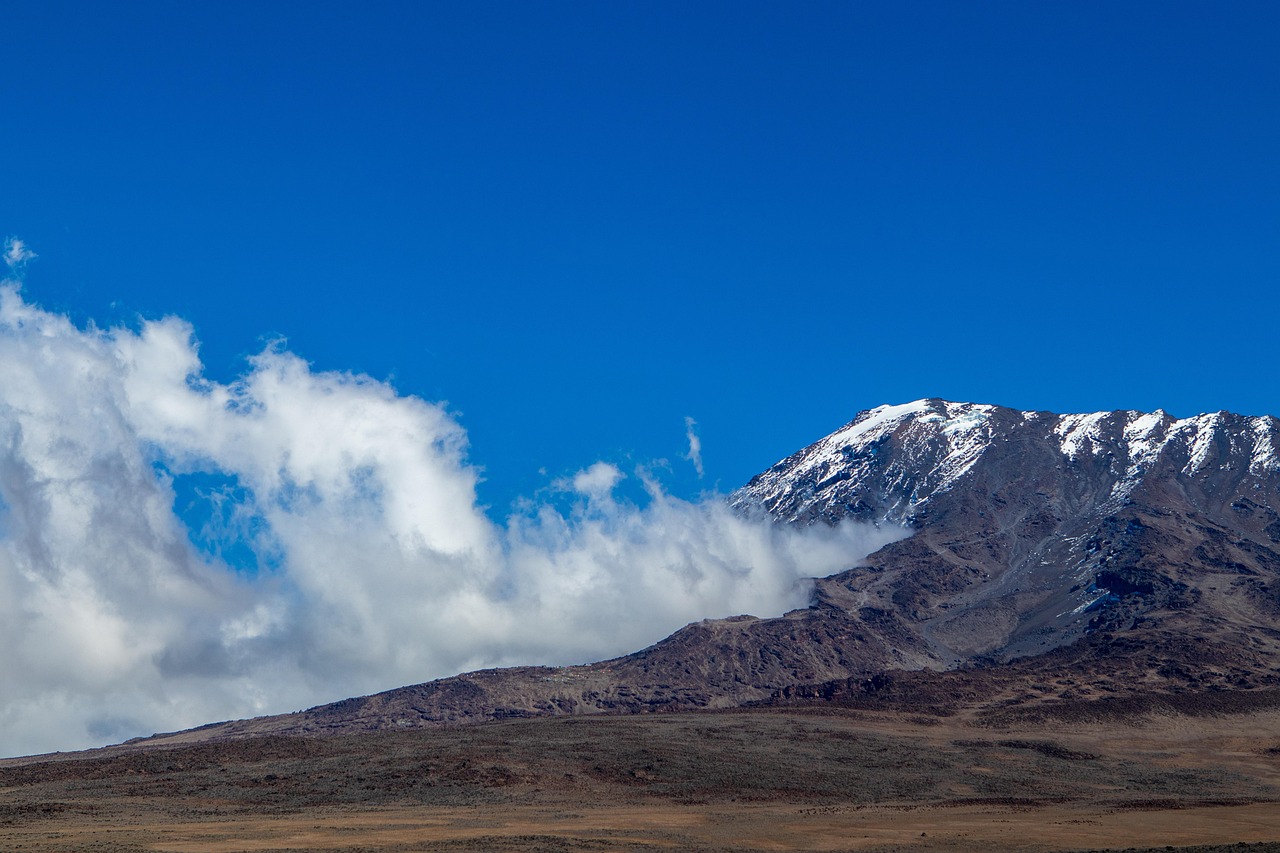| Duration: Varies by Package | Group Size: Flexible | Availability: Year-Round |
| Suitable For: All Travelers | Pickup & Drop: Included | Language: English (Others on Request) |
Tour Overview
Climb Mount Kilimanjaro via the 6 days Rongai Route, approaching from the northern slopes near Kenya. Enjoy quiet trails, diverse landscapes, and a rewarding ascent to Uhuru Peak with fewer crowds.
The 6 days Rongai Route Kilimanjaro is the only trail that approaches the mountain from the northern side, close to the Kenyan border. It’s known for its tranquility, gradual slopes, and spectacular scenery. Unlike the busier southern routes, Rongai offers a quieter and more remote experience. This six-day itinerary allows for a steady ascent with varied landscapes — from lush forests and heather moorlands to alpine deserts and the icy heights of Uhuru Peak. The descent follows the Marangu Route, providing a full-circle experience of Kilimanjaro’s diverse environments.
6 Days Rongai Route Kilimanjaro — Itinerary & Experience
Introduction
The Rongai Route is ideal for trekkers seeking solitude and a steady climb. Its gentle gradient and scenic approach make it a great option for both beginners and experienced hikers. The route begins on Kilimanjaro’s dry northern slopes and passes through several ecological zones before reaching the summit. It’s less affected by rainfall, making it a good choice during wetter months as well.
Day 1 — Rongai Gate to Simba Camp
The adventure begins at the Rongai Gate (1,950m), where you’ll register and meet your mountain crew. The trek starts with a gradual ascent through pine forest and farmland. The trail offers peaceful surroundings with occasional views of wildlife, including Colobus monkeys. After about four hours, you’ll arrive at Simba Camp (2,600m), your first overnight stop, located on the edge of the moorland zone.
Highlights
Tranquil forest trail, wildlife sightings, and a gentle start to your Kilimanjaro adventure.
Day 2 — Simba Camp to Second Cave Camp
After breakfast, continue ascending through open moorland. The vegetation becomes sparse as the altitude increases, and views of the rugged Mawenzi Peak begin to appear. You’ll arrive at Second Cave Camp (3,450m) by mid-afternoon, where you can relax and soak in the mountain atmosphere. The camp offers panoramic views of both Kibo and the surrounding plains.
Highlights
Expansive views of Mawenzi and the distant Kenyan landscape, along with a moderate acclimatization climb.
Day 3 — Second Cave to Kikelewa Camp
The trail continues upward across semi-desert terrain, dotted with unique alpine plants like giant lobelias and groundsels. The ascent is steady, leading to Kikelewa Camp (3,600m), a serene spot near a small water stream. This day provides excellent acclimatization as the landscape shifts from heather to alpine desert.
Highlights
Beautiful transition zones, peaceful camp setting, and increasingly dramatic mountain views.
Day 4 — Kikelewa Camp to Mawenzi Tarn Camp
The climb becomes steeper as you approach Mawenzi Tarn Camp (4,330m), nestled in a spectacular amphitheater of towering cliffs. The campsite lies beneath the jagged spires of Mawenzi Peak and offers one of the most striking views on Kilimanjaro. Spend the afternoon relaxing or taking a short acclimatization hike around the tarn.
Highlights
Incredible views of Mawenzi Peak, high-altitude hiking, and excellent acclimatization.
Day 5 — Mawenzi Tarn to Kibo Hut to Uhuru Peak to Horombo Hut
The trail crosses the lunar-like saddle between Mawenzi and Kibo. After reaching Kibo Hut (4,703m), you’ll rest and prepare for your final ascent to the summit. Around midnight, begin the slow climb toward the crater rim. Reach Gilman’s Point (5,685m) as the horizon begins to glow with sunrise colors, then continue to Uhuru Peak (5,895m), Africa’s highest point. After capturing the breathtaking views, descend back to Kibo Hut for a short break and continue down to Horombo Hut (3,720m) for overnight rest.
Highlights
Reaching Uhuru Peak at sunrise and crossing the vast saddle between Kilimanjaro’s two main peaks.
Day 6 — Horombo Hut to Marangu Gate
Enjoy breakfast before descending through the lush moorland and rainforest back to Marangu Gate. The descent offers a chance to appreciate the mountain’s ecosystems once more. At the gate, you’ll receive your well-earned summit certificate and say farewell to your guides and crew. Transfer back to Moshi or Arusha for a relaxing evening filled with celebration and reflection.
Highlights
The rewarding end of your climb through diverse scenery and the sense of accomplishment from standing atop Africa.
Trip Highlights
- Quiet and less crowded route from Kilimanjaro’s northern side.
- Excellent acclimatization profile with varied landscapes.
- Charming campsites with dramatic mountain backdrops.
- Panoramic views of both Mawenzi and Kibo peaks.
- Combination of remote ascent and scenic descent through Marangu Route.
Best Time to Climb via Rongai Route
The Rongai Route can be climbed year-round, but the best conditions occur from January to March and June to October. It’s also a great choice during the short rainy season since the northern side receives less rainfall than other routes.
Preparation Tips
- Train with long hikes and endurance exercises to prepare for high altitude.
- Keep a steady pace and drink plenty of water to prevent altitude sickness.
- Pack warm clothing for summit night and layers for temperature changes.
- Use trekking poles to support your knees during the descent.
A Peaceful Route to the Roof of Africa
The 6 days Rongai Route Kilimanjaro offers a quieter and equally breathtaking journey to Uhuru Peak. With its tranquil trails, gradual climbs, and stunning scenery, this route provides a rewarding and memorable ascent for those who value both solitude and adventure. Every moment — from forested paths to glacial peaks — makes this climb a truly unforgettable experience on Africa’s highest mountain.



